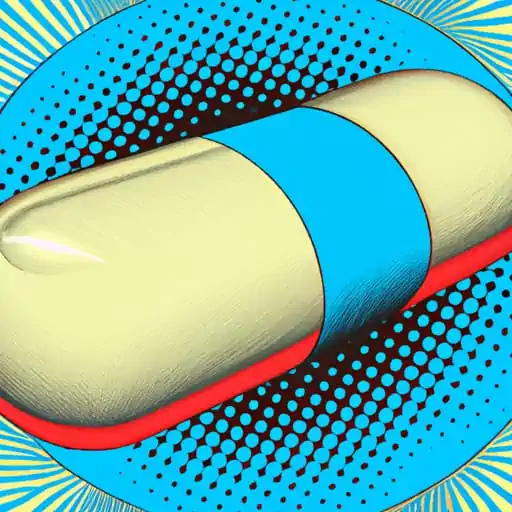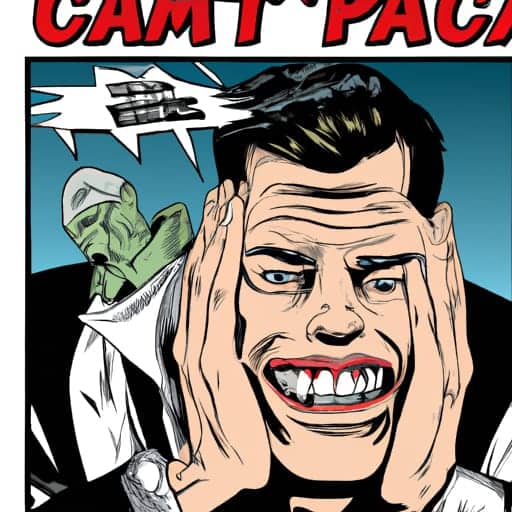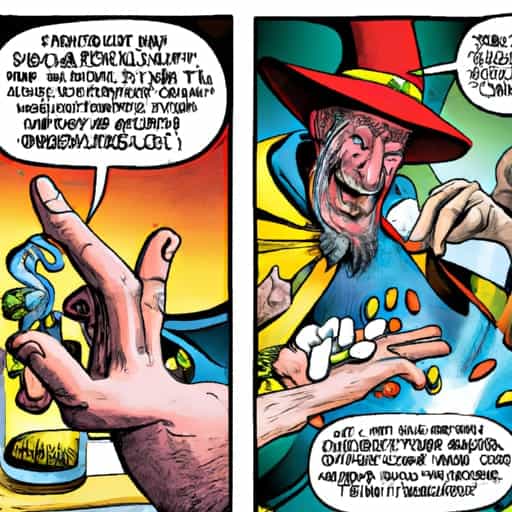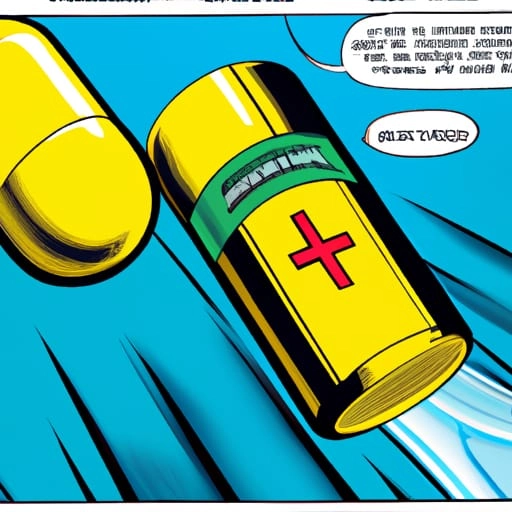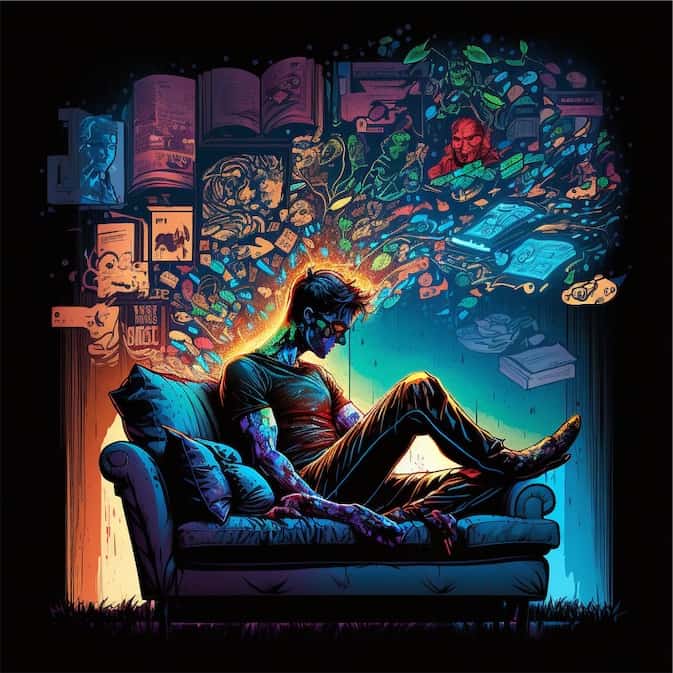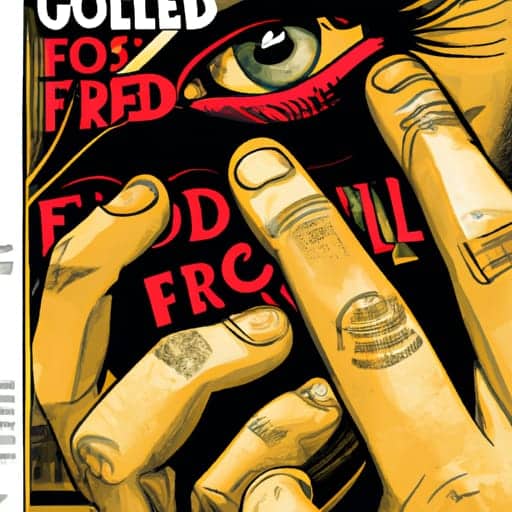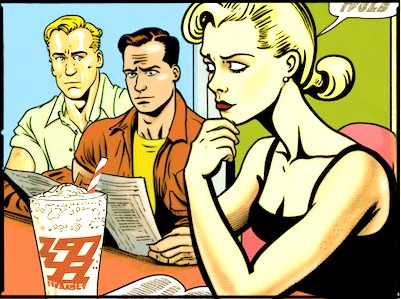5 Most Effective Antidepressants for Anxiety and Depression (and 3 you should avoid)
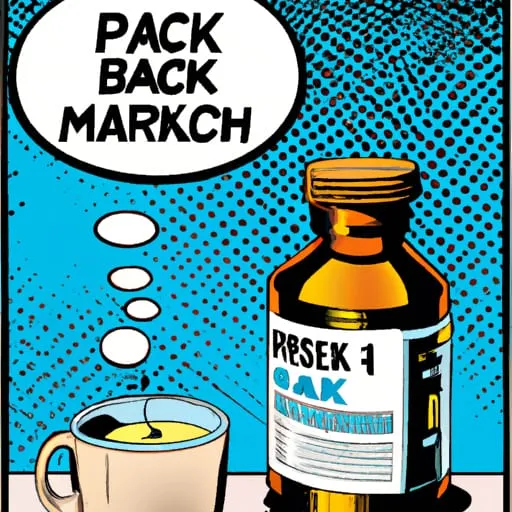
Antidepressant medication is one of the most commonly prescribed medications in the world. They are used to treat mental disorders such as depression, but are also first line treatment for anxiety.
However, not all antidepressants are created equal. Some are more effective than others, and some have more severe side effects than others. In this article, we’ll look at the most effective antidepressants and which ones you should avoid if you’re concerned about side effects. We’ll also provide some tips on how to find the right antidepressant for you. So if you’re ready to get your life back on track, read on!
Mental Health Medications: Things We Need To Say First
I am going to begin with some ideas that I think are really important when deciding whether you should take antidepressants.
Firstly, though they are called antidepressants they are licensed for a range of mental illness conditions, including anxiety disorders, panic disorder, and generalized anxiety.
If you are not interested, please feel free to skip ahead to the drugs.
Medications: Finding The Sweet Spot
Sometimes medications are researched and developed with a particular aim in mind — like a cure for a particular disorder like AIDs or a Smallpox vaccine.
Sometimes the effects of a medication are a surprise, like with viagra which was developed as a blood pressure tablet; aspirin was a pain-killer but found to work to stop clotting.
But eventually drugs get licensed for a particular health condition, and they get an ‘indication’ which is the condition the drug is intended to improve.
Medications can be used off-license too—a prescriber can prescribe for another condition, if in his or her clinical judgment it will be useful. When they do this, however, they are taking more of a risk if it goes wrong.
Therefore, all medications have intended effects, which are supposed to be beneficial.
They also have more or fewer side effects, which are not what they are prescribed for.
Sometimes these side-effects are completely unwanted, such as nausea or bleeding, but sometimes the side effects can be beneficial.
For example, we know that the antidepressant mirtazapine makes you sleepy and stimulates your appetite.
We prescribe it for mood, but if the patient is also underweight and suffering from insomnia, those side effects can be very welcome.
If, however, the depressed patient is overweight and sleeps too much, then we absolutely don’t want these side effects and will avoid mirtazapine.
With most medication, including non-psychiatric medications such as pain-killers or antibiotics, we aim to titrate the dose to find that sweet spot where we have wonderful benefits but the patient can put up with the side effects.
The patient might be lucky and get very few side effects so we can increase the dose to get the maximum benefits in those drugs where we know there is a dose response benefit.
For less lucky patients, sometimes we have to keep the dose down and put up with fewer benefits because the higher doses cause too many unpleasant side effects.
For example, with ADHD medication such as methylphenidate, we know it gives extra focus, reduces distractibility and thus gives better productivity and, in fact, calmness.
But we also know it can increase heart rate, anxiety, blood pressure and cuse weight loss.
Maybe going up to 72mg methylphenidate will give great focus but distressing palpitations. Here, we would reduce the dose and accept we aren’t getting the most benefit, but also the patient isn’t getting terrifying palpitations.
That is what I mean by finding the sweet spot. It’s not just about jamming up the dose, it’s about monitoring side effects — what is tolerable for the patient.
The sweet spot is somewhere between the Maximum Tolerated Dose and the Minimum Therapeutic Dose.

What Is A Minimum Effective Dose Of An Antidepressant To Treat Anxiety and depression?
The Minimum Effective Dose (also called the Minimum Therapeutic Dose) is the smallest amount of a medication that will produce the desired effect in the patient.
For example, the minimum effective dose of paracetamol (Tylenol) is 1000mg. A study showed that below 1000mg there is no firm evidence that it provides helpful pain relief.
https://openpainjournal.com/VOLUME/11/PAGE/12/FULLTEXT/
Another example is setraline, which has a minimum effective dose of 50mg a day.
Patients sometimes want to take less than 50mg. This isn’t usually due to side-effects but to some misguided idea that taking antidepressants is weak.
I explain that there is no evidence that sertraline at 25mg a day will help.
Sometimes they say it does. I may believe that is due to them believing it does rather than any chemical effect, but if it helps them, then it helps them, and that’s fine.
But just so as you know — there are lots of research papers on the minimum dose that does any good.
https://www.nature.com/articles/tp2016104
Equivalent Doses of Medication
Another potential confusion with antidepressants is that people see the size of the tablet, let’s say 20mg of fluoxetine, 50mg of Sertraline and 10mg of Citalopram and they think that because of the number, 50mg Sertraline must be stronger than 10mg Citalopram.
That is not true.
Again, there have been a lot of studies on this, but 10mg a day of Citalopram is the minimum effective dose of citalopram, and is equivalent to the minumum effective dose of fluoxetine, which is 20mg a day, and is the equivalent dose of 15mg Mirtazapine a day (or night).
You see that the minimum effective dose of a drug provides a benchmark from which we can calculate other equivalent doses.
This is done quite a lot in treating benzodiazepine addiction, where we reduce the dose, but also switch to a longer-lasting type of benzodiazepine.
250mcg of Clonazepam is equivalent to 5mg of diazepam, and 10mg of Temazepam is equivalent to 5mg Diazepam.
https://www.sps.nhs.uk/articles/choosing-an-equivalent-dose-of-oral-benzodiazepine/
We generally chose to switch a benzodiazepine addict from a drug with a short half-life, like clonezapam, to one with a longer half-life, such as diazepam, to make the withdrawal less awful.
That leads us to the concept of the half-life.
Medication Half Life
When you consume nutrients, your body uses some of them and tries to store the rest. It stores glucose, fat, protein, minerals, and non-water-soluble vitamins. It does not store medication. In fact, it tries very hard to get rid of drugs as quickly as it can.
Over our evolutionary history, our livers have developed a lot of enzymes that break down poisons and convert them to something less dangerous and eventually get rid of them through urine or faeces, or even sweat.
The body treats medication like poison.
The half-life is the time the body takes to excrete half the amount of the consumed drug.
Different people have better or worse functioning bodies, and so take shorter or longer to get rid of drugs.
Different drugs take longer to get rid of, and so they have longer or shorter half-lives.
For example, caffeine has a half-life of about five hours in most people. This means it takes about ten hours to get rid of that morning cup of coffee completely.
Alcohol has an average half-life of about four and a half hours.
THC from marijuana half-life is about eight hours.
The half-life of sertraline is on average 26 hours.
The half-life of fluoxetine is 1-4 days, and it then breaks down into norfluoxetine which lingers around for a further seven to fifteen days before your body has got rid of it all.
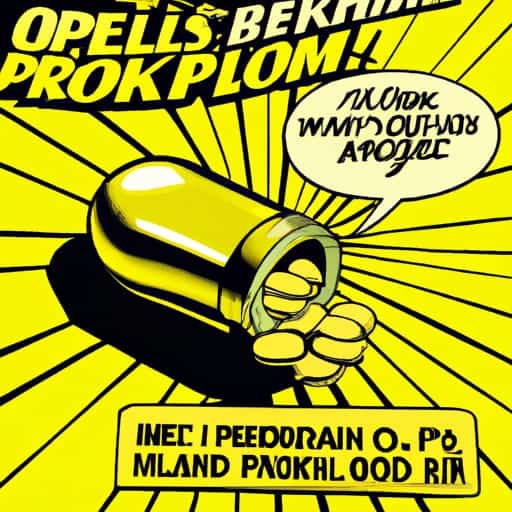
How Your Body Processes Medication
This isn’t the place to go in depth about how medications are metabolized, but as I mentioned it above with fluoxetine, I will set out it out in a basic way.
At first pass, the liver may break down a drug into something else, and then that something else (known as a metabolite) is either further broken down or excreted through liver or kidneys.
As we saw above, first fluoxetine is broken into norfluoxetine and it takes more days to get rid of that.
Alcohol is first broken down into acetaldehyde, which is poison and which explains why you feel ill after all the alcohol has become acetaldehyde. The acetaldehyde is broken down then into acetic acid (vinegar) which then breaks into water so you can urinate it out. This takes hours, as those of you who have ever had a hangover will know. Alcohol has a depressive effect.
One of the metabolites of codeine is morphine. You will get the experience of the morphine once the liver has broken it down from codeine.
The final thing here is that people have different livers. We know that a person of European descent has developed different enzymes to break down alcohol more efficently than people of other heritages, and so Europeans tolerate alcohol better.
Some people can metabolize the sugar in cow’s milk (lactose) while others lack the enzymes and get sick from cow’s milk.
Different populations and different individuals metabolize medications differently.
We can guess from this that different patients will react differently in terms of benefits and side effects from the same medication.
And this is what we see.
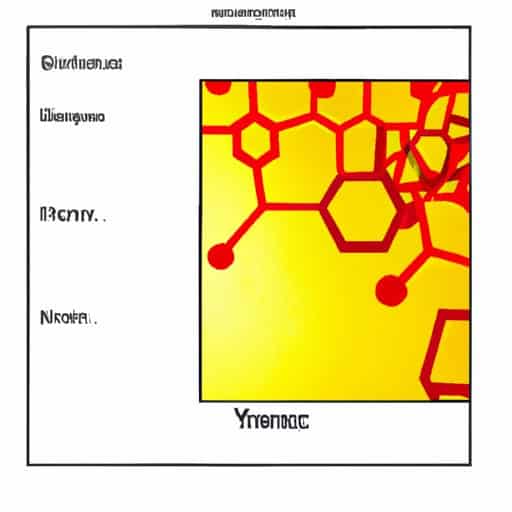
Brand Names For Medication
All medications have a medical name which is sometimes a chemical name and mostly invented. So promethazine hydrochloride is chemically a hydrochloride but the word promethazine itself is invented.
Sometimes the same class of drugs end in similar names such as:
- Diazepam
- Temazepam
- Nitrazepam
- Clonezapem
But then we get
- Chlordiazepoxide
- Midazolam
Which are also benzodiazepines like the first few.
Antidepressants have their pharmacological name like sertraline, but this is also known by a brand-name: Zoloft. Fluoxetine is Prozac but also
- Rapiflux
- Sarafem.
- Selfemra.
- Oxactin
I will show the most common brand name alongside the pharmacological name.
The Most Effective Anti-Depressants for Anxiety Disorders and Depression
The source of this information is from a very influential stematic review and network meta-analysis in the medical journal The Lancet which pooled research data from 522 clinical trials of antidepressants.
https://www.instapaper.com/read/1553800808
It was published in 2018 by Andrea Cipriani and 17 others, and it looked at 21 antidepressant drugs.
It was a meta analysis, which is considered the gold standard of clinical evidence.
They looked at antidepressants from two angles:
Their effectiveness against anxiety and depression
Their tolerability.
As such, they saw some medications that were effective against anxiety and depression but had side effects patients could not put up with, so they stopped taking them.
They also saw medications that had low-side effects, but did very little good, so there was no point in taking them.
They were able to identify the best antidepressants that hit that sweet spot where they did most good, but caused least side effects.
Antidepressants Versus Placebo
You know that a placebo in these studies means giving half the patients a tablet that contains the medication being tested, e.g. fluoxetine, while half the patients get tablets that have no active ingredients.
The patients do not know which is which, but both groups answer questionnaires about their anxiety and depression symptoms, and if the ones who took the actual antidepressant report significantly more often that they felt their anxiety and depression were reduced than those who took the non-active tablet — the placebo, then the antidepressant is doing something.
If the ones who took the antidepressant are no better than the ones who took the placebo, then that medication does not help anxiety and depression
Effectiveness of Antidepressants In Reducing Anxiety and Depression
This was the simplest measure to present and understand.
The higher the score, the more effective the antidepressant.
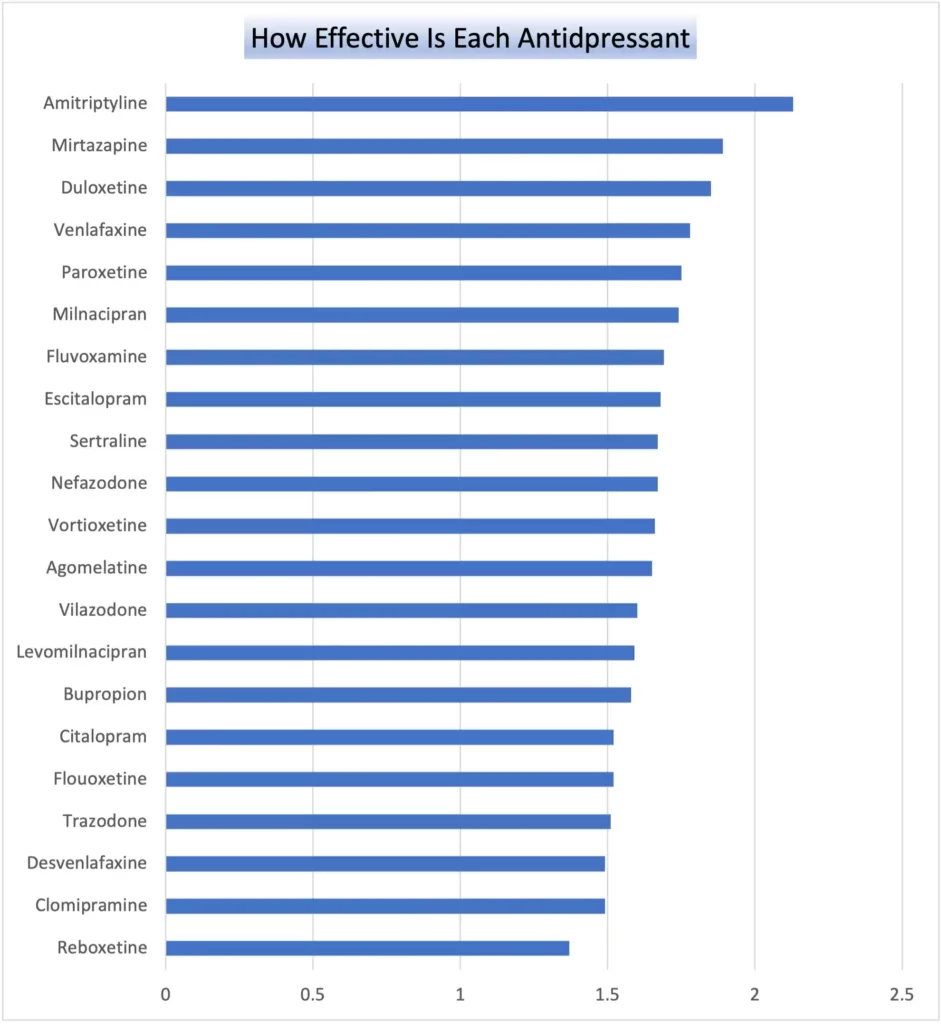
Tolerability of Antidepressants
This was measured by looking at the numbers who dropped out of all the 522 studies they considered.
They figured that the more people who dropped out of the study, the worse the side effects were
Here, lower numbers are better.
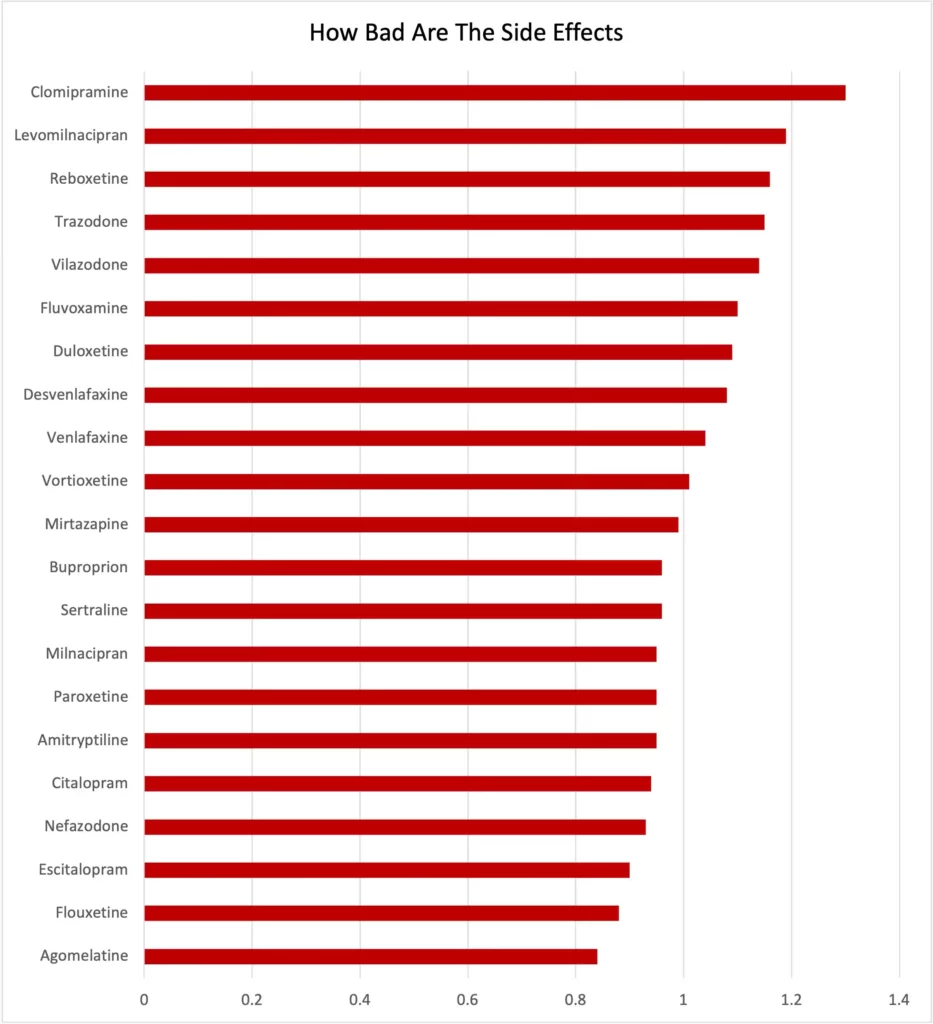
The 5 Most Effective Antidepressants for Anxiety Disorder and Depression
Interestingly these antidepressant medications come from different classes of medications. They can all be used to treat anxiety depression too.
- Amitryptiline is a tricyclic antidepressant (TCA). It is also known as Nardil, Elavil or Vanatrip.
Like reuptake inhibitors, tricyclics seem to stop serotonin and epinephrine from going back into nerve cells after they leave a synapse.
2. Mirtazapine is a tetracyclic antidepressant. Mirtazapine seems to prevent neurotransmitters from binding to certain nerve receptors. Because norepinephrine and serotonin don’t bind to the receptors, they seem to build up in the spaces between nerve cells. Because of this, the levels of neurotransmitters go up.
3. Duloxetine (Cymbalta) and 4. Venlafaxine (Effexor) are selective norepinephrine (noradrenalin outside the USA) reuptake inhibitors (SNRI) . They block the reuptake of both serotonin and norepinephrine, so both neurotransmitters become more available.
5. Paroxetine is one of the selective serotonin reuptake inhibitors (SSRI). It is fascinating that in the UK, we are urged to prescribe SSRIs before all other types of antidepressants, but paroxetine is the only one that makes it into the top five most effective antidepressants.
SSRIs block the serotonin from being sucked back into the little storage sacks on the nerve cells where it is kept, so there are higher concentrations free to do what it is they do with mood.
It used to be thought that low serotonin levels caused depression. After extensive research, that doesn’t seem to be true.
https://www.nature.com/articles/s41380-022-01661-0
The 5 Antidepressants With The Fewest Side-Effects
- Agomelatine
- Fluoxetine
- Escitalopram
- Nefedazone
- Citalopram
You notice that none of the five most effective antidepressants appear in the list of the five antidepressants with the least side effects.
We have to go looking for that sweet spot.
Let’s Find A Compromise
Truthfully, some people suffer from side effects more than others. What you can tolerate, maybe I can’t, so I would always be led by the effectiveness of the antidepressant, try it to see if could tolerate the side-effects, and if I can’t look for one with fewer side effects, or less extreme ones.
We see escitalopram is the 8th most effective antidepressant and the third best for side effects. That would therefore be a cautious compromise.
Venlafaxine is the 4th most effective, but only 13th best for side effects, or put another way, it’s the 9th worst.
That might be a less cautious choice as it’s got more side effects that escitalopram but is more effective.
The top effective antidepressant is one of the oldest: the old tricyclic amitriptyline, given more often these days for nerve pain and sleep problems than for depression and anxiety. And it’s the 6th best for side effects.
So that’s the obvious choice, isn’t it?
Well, a word of warning. No one ever said amitryptiline wasn’t effective as an antidepressant, but unfortunately, it was pretty lethal in overdose. So, when we prescribed amitryptiline for depressed people, we also them the means of ending their lives.
Uncool.
Only take amitryptiline if you do not have suicidal thoughts.
Sertraline is halfway down the table for effectiveness, but it’s not terrible for side effects, so it’s a reasonable choice.
Finally, mirtazapine must be in the top 5. It is an effective medication, but it will put 14 pounds of weight on you on average due to it stimulating your appetite, and it will make you sleep, and that can be a good thing or a bad thing I will grant you.
Which 3 Antidepressants Should You Avoid?
This is actually much easier to suggest antidepressants you should avoid:
1. Reboxetine
It just doesn’t work, and it has unpleasant side effects.
2. Clomipramine
It’s not very effective. It makes you eat, and it makes you drowsy. It’s also quite dangerous in overdose. It is the worst-rated for side effects.
3. Trazodone
This is a similar drug to mirtazapine, so it’s surprising it is not anywhere close as effective. Trazodone makes you sleepy, and also it can cause priapism in males. This sound like fun at first, but the novelty wears off with the patients I’ve prescribed it for.
Conclusion: What Are The Most Effective Antidepressants for Anxiety and Depression?
I hope that was an informative survey of which are the most effective antidepressants for anxiety and depression. You see that selecting the most effective antidpressants for anxiety and depression it is not as simple as it first seemed.
Depending on how cautious you are about side effects, we can, however, pick five antidepressants that range from the very effective but kind of harsh, to the not so effective but kinder on the body and mind.
My choice would be (drum roll) in this order:
1. Amitryptiline (Elavil)
2. Mirtazapine (Remeron, Zispin)
3. Venlafaxine (Effexor)
4. Sertraline (Zoloft)
5. Escitalopram (Lexapro)
There we are then. Speak to your healthcare provider as they say.
Before You Go…
This is not the end of choosing an antidepressant. We need to be mindful of certain special considerations:
- Safety with heart conditions
- Safety when someone is suicidal
- The negative effect on libido and sexual ability
- Safety with inhalers and asthma
- Safety in pregnancy and breast-feeding
- Safety when mixed with other drugs, such as blood-thinners, inhalers, and medications that reduce sodium levels.
If any of these health conditions relate to you, and you are living with feelings of panic and depression, then you should raise them when having a discussion with your health care provider before they reach crisis point.
They will welcome you having a chat with them about treatment with antidepressants for your anxiety or your depression (or both).
Even if your doctor is not a spcialist in psychiatry, they should know about interactions and allergies.
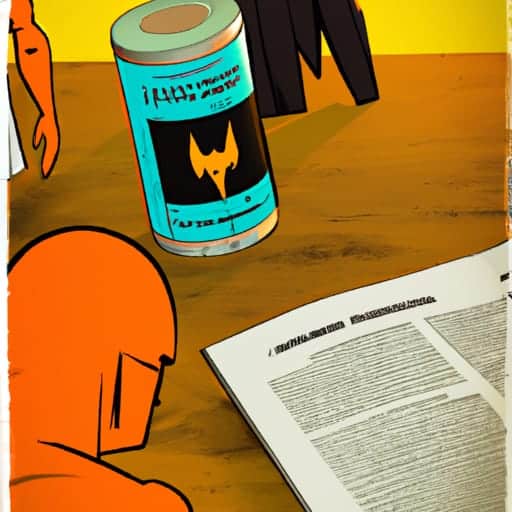
Health Conditions Disclaimer
Although I am a nurse and a prescriber of psychotropic medication by profession, I am not YOUR nurse. All content and information on this website is for informational and educational purposes only, does not constitute medical advice, and does not establish any kind of patient-client relationship by your use of this website.

